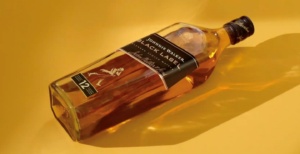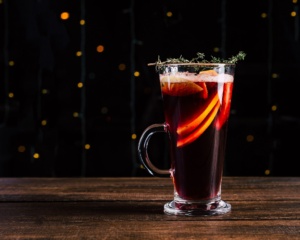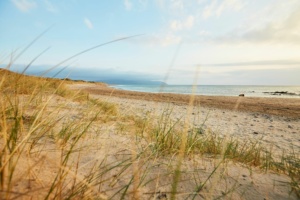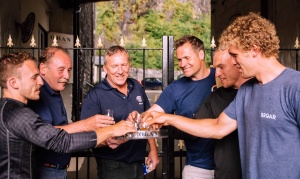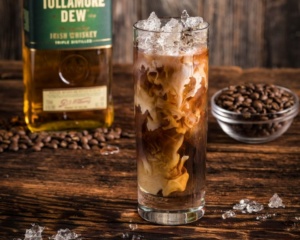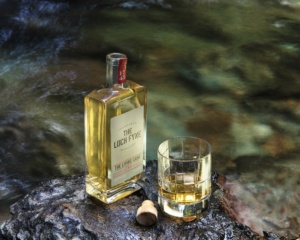Three Sheets to the Wind
Named after the legendary tea clipper, Cutty Sark, Brian Wilson delves into the story behind one of the world's most recognizable whiskies.
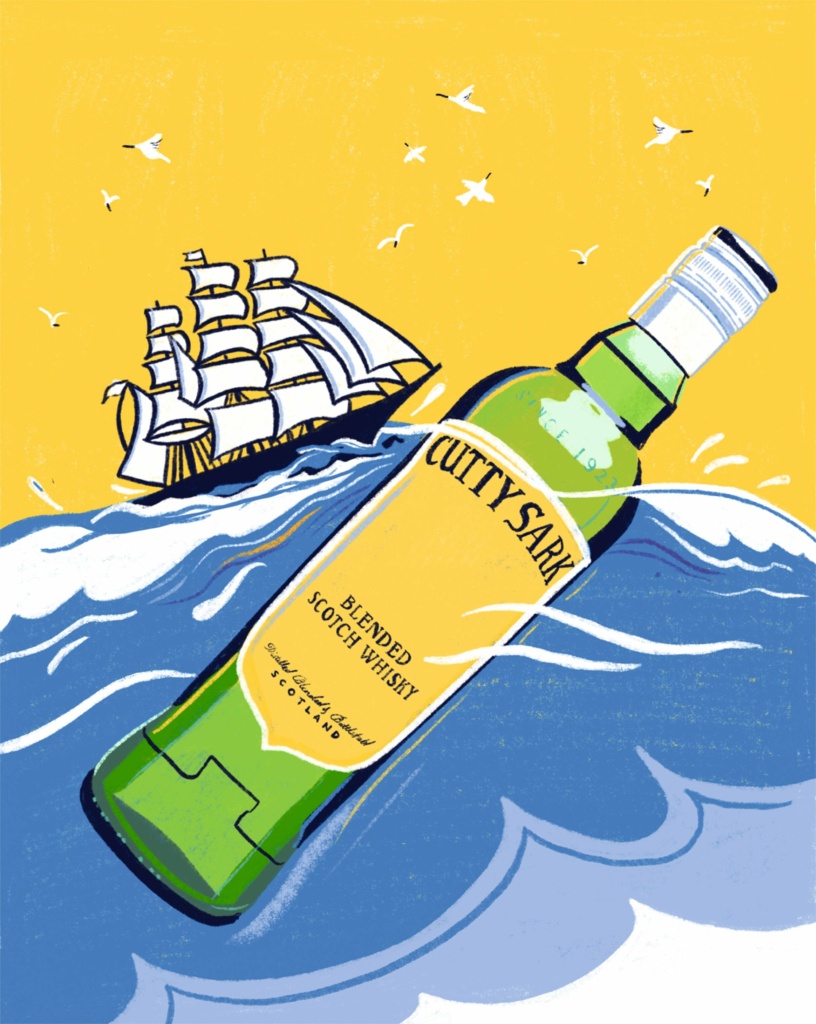 Supposing you don't believe or agree with another word in the paper, it has long been worth reading The Daily Telegraph for the obituaries; rich in detail and exotic in choice of characters. In The Daily Telegraph's world, nobody seems to expire before the age of 90.
A recent obituary which caught my eye was about John Rudd, sub-titled "leading wine merchant and driving force behind the worldwide success of Cutty Sark whisky." Sure enough, the subject had made it to the ripe old age of 94 years, 72 of them spent as an eponymous part of Berry Brothers & Rudd, of St. James's Street in London.
"As managing director from 1966," vouchsafed the Telegraph, "Rudd travelled the world with his wife Margaret, building partnerships that enabled Cutty Sark to reach more than 100 countries - and generating profits that enabled Berry Brothers & Rudd to extend its property footprint in St. James's." Through all this, he was "formally mannered, impeccably tailored" and possessed of "a high sense of business integrity."
Apart from giving the impression of a fine chap with a very nice lifestyle, this account of John Rudd's life led me into my own voyage of discovery about Cutty Sark - surely one of the great marketing jobs of the twentieth century. Even in an industry which has always been characterised by strong brand images, none has hled more lasting appeal than the Cutty Sark name, label and product.
The origins of that formula came together round a table at 3 St. James's Street one March day in 1923. Berry Brothers & Rudd were wine people with a pedigree stretching back to the seventeenth century and a clientele to match this prime location; just up the road from royal palaces, down the street from the Ritz and generally in the midst of wealthy London society, for whom Cognac had been the long-established spirit of choice. That had begun to change after the Cognac industry was devastated by the French grape blight of phyloxera in the 1860s. As stocks declined, the transition to whisky as a pre-dinner aperitif gathered pace. However, the wine drinkers' palate did not favour anything too heavy or peaty, as the Berry business kept being told by their clients. Just as they liked Cognacs light in colour and flavour, so they wanted their whisky.
Berry Brothers & Rudd already had a sideline in blended whisky and indeed their St. James blend is still owned by them today. However, the new mission required a new blend, name and image. That was the challenge facing Walter and Francis Berry, their recently acquired partner Hugh Rudd, a Norfolk wine merchant, and the fourth man - James McBey - when they gathered in the parlour of 3 St. James's Street. James McBey may need introduction to a whisky audience but not to connoisseurs of early twentieth century Scottish art. Born at Newburgh in Aberdeenshire, McBey broke free of early employment in a bank to become prominent in the revival of etching in Britain as well as a renowned painter in watercolours. During the First World War, he was posted to join the British Expeditionary Force in Egypt with licence to portray what he saw. His oil painting of Lawrence of Arabia and 300 more watercolours from his time in the army continue to be exhibited in the Imperial War Museum.
On returning to London, McBey was much in demand as a portrait painter and this drew him into a social set that included the Berry brothers. And so it was that he joined the conversation that not only settled on the very Scottish name Cutty Sark but also, there and then, mapped out the label which was to stay pretty much the same for 80 years, with only modest recent adjustments. The image of the sailing ship, Cutty Sark, against a yellow background on green glass became one of the most recognisable whisky bottles in the world.
The name had its origin in Robert Burns' epic poem, Tam o'Shanter, where the fastest of fleeing Tam's pursuers was immortalised in the line "Weel done, Cutty Sark" which then became a popular Scottish catchphrase. Literally, cutty sark meant "short skirt." When s Scots-born shipowner, Captain John Willis, commissioned a sailing boat with the ambition for it to become the fastest tea clipper on the Shanghai to London route, built in Dumbarton and launched in 1869, Cutty Sark was a name with resonance and the vessel's bow was adorned with a figurehead depicting the fleet-footed temptress.
The Cutty Sark never won the tea race but did become the fastest vessel on the Sydney to London wool run. However, sail was being overtaken by the age of steam and the opening of the Suez Canal consigned these amazing voyages to nostalgic history. The Cutty Sark was the last of the great sailing ships but by the early 1900s had been sold to Portugese owners. However, the hero of the tale became Captain Wilfred Dowman, a retired windjammer skipper who had the good fortune to be married to a Courtald heiress and harboured a burning desire to bring the Cutty Sark back to Britain.
When, in 1923, he succeeded in doing so, it became a massive story in the popular press - a rare flash of good news in a country still emerging from the grim post-war trauma. It was a happy coincidence of timing. With the Cutty Sark in the headlines, Berry Brothers & Rudd, augmented by McBey's creativity, decided that the full-blown sailing ship, carrying all before her, offered the perfect image for a more optimistic era.
There was also one eye on the American market in which Scotch had started to boom prior to the introduction of Prohibition in 1920. Three years later, nobody expected that doomed piece of social engineering to last much longer, not least because it was being so widely circumvented while feeding wholesale criminality. As events transpired, it was to be around for another decade.
While the owners of Cutty Sark may have been gentlemen in London, they soon proved to be masters of finding partners in the bootlegging trade with the innumerable speakeasies - 32,000 in New York City alone - as willing customers. Cutty Sark became the favoured whisky of Prohibition-era America.
As its official history delicately recalls: "The brand's in-roads had been effectively laid during the shadowy decade of 1924 to 1933." Bahamas was probably the most favoured route while "on the small island of St. Pierre off the coast of Labrador and Newfoundland stands a small house built during Prohibition called Villa Cutty Sark... When it officially started being imported into the US market in late 1933, Cutty Sark was already known and beloved by its American audience."
And that, pretty much, is where John Rudd - subject of that Telegraph obituary - came in, selling the legitimised product into the United States to the point where it became the country's most popular whisky brand while travelling constantly to achieve similar status in diverse markets around the world.
As befitted the Cutty Sark connection, John Rudd was himself "an accomplished sailor as the owner of Solace, a 60-foot Norfolk wherry built in 1903 and a rare surviving example of the stately craft that once piled the Norfolk Broads" - which just goes to confirm the point about Telegraph obituaries being as detailed as their subjects are characterful. Under John Rudd's direction, Cutty Sark for many years put its name to the Tall Ships Race - an unusually appropriate example of commercial sponsorship!
The Cutty Sark brand was acquired from Berry Brothers & Rudd by the Edrington Group in 2010 and they in turn sold it eight years later to the second largest French drinks company, La Martiniquaise-Bardinet, who saw it as a rapid route into the expansion of their presence in the global whisky market. Once again, Cutty Sark was relied to go full sail ahead.
Supposing you don't believe or agree with another word in the paper, it has long been worth reading The Daily Telegraph for the obituaries; rich in detail and exotic in choice of characters. In The Daily Telegraph's world, nobody seems to expire before the age of 90.
A recent obituary which caught my eye was about John Rudd, sub-titled "leading wine merchant and driving force behind the worldwide success of Cutty Sark whisky." Sure enough, the subject had made it to the ripe old age of 94 years, 72 of them spent as an eponymous part of Berry Brothers & Rudd, of St. James's Street in London.
"As managing director from 1966," vouchsafed the Telegraph, "Rudd travelled the world with his wife Margaret, building partnerships that enabled Cutty Sark to reach more than 100 countries - and generating profits that enabled Berry Brothers & Rudd to extend its property footprint in St. James's." Through all this, he was "formally mannered, impeccably tailored" and possessed of "a high sense of business integrity."
Apart from giving the impression of a fine chap with a very nice lifestyle, this account of John Rudd's life led me into my own voyage of discovery about Cutty Sark - surely one of the great marketing jobs of the twentieth century. Even in an industry which has always been characterised by strong brand images, none has hled more lasting appeal than the Cutty Sark name, label and product.
The origins of that formula came together round a table at 3 St. James's Street one March day in 1923. Berry Brothers & Rudd were wine people with a pedigree stretching back to the seventeenth century and a clientele to match this prime location; just up the road from royal palaces, down the street from the Ritz and generally in the midst of wealthy London society, for whom Cognac had been the long-established spirit of choice. That had begun to change after the Cognac industry was devastated by the French grape blight of phyloxera in the 1860s. As stocks declined, the transition to whisky as a pre-dinner aperitif gathered pace. However, the wine drinkers' palate did not favour anything too heavy or peaty, as the Berry business kept being told by their clients. Just as they liked Cognacs light in colour and flavour, so they wanted their whisky.
Berry Brothers & Rudd already had a sideline in blended whisky and indeed their St. James blend is still owned by them today. However, the new mission required a new blend, name and image. That was the challenge facing Walter and Francis Berry, their recently acquired partner Hugh Rudd, a Norfolk wine merchant, and the fourth man - James McBey - when they gathered in the parlour of 3 St. James's Street. James McBey may need introduction to a whisky audience but not to connoisseurs of early twentieth century Scottish art. Born at Newburgh in Aberdeenshire, McBey broke free of early employment in a bank to become prominent in the revival of etching in Britain as well as a renowned painter in watercolours. During the First World War, he was posted to join the British Expeditionary Force in Egypt with licence to portray what he saw. His oil painting of Lawrence of Arabia and 300 more watercolours from his time in the army continue to be exhibited in the Imperial War Museum.
On returning to London, McBey was much in demand as a portrait painter and this drew him into a social set that included the Berry brothers. And so it was that he joined the conversation that not only settled on the very Scottish name Cutty Sark but also, there and then, mapped out the label which was to stay pretty much the same for 80 years, with only modest recent adjustments. The image of the sailing ship, Cutty Sark, against a yellow background on green glass became one of the most recognisable whisky bottles in the world.
The name had its origin in Robert Burns' epic poem, Tam o'Shanter, where the fastest of fleeing Tam's pursuers was immortalised in the line "Weel done, Cutty Sark" which then became a popular Scottish catchphrase. Literally, cutty sark meant "short skirt." When s Scots-born shipowner, Captain John Willis, commissioned a sailing boat with the ambition for it to become the fastest tea clipper on the Shanghai to London route, built in Dumbarton and launched in 1869, Cutty Sark was a name with resonance and the vessel's bow was adorned with a figurehead depicting the fleet-footed temptress.
The Cutty Sark never won the tea race but did become the fastest vessel on the Sydney to London wool run. However, sail was being overtaken by the age of steam and the opening of the Suez Canal consigned these amazing voyages to nostalgic history. The Cutty Sark was the last of the great sailing ships but by the early 1900s had been sold to Portugese owners. However, the hero of the tale became Captain Wilfred Dowman, a retired windjammer skipper who had the good fortune to be married to a Courtald heiress and harboured a burning desire to bring the Cutty Sark back to Britain.
When, in 1923, he succeeded in doing so, it became a massive story in the popular press - a rare flash of good news in a country still emerging from the grim post-war trauma. It was a happy coincidence of timing. With the Cutty Sark in the headlines, Berry Brothers & Rudd, augmented by McBey's creativity, decided that the full-blown sailing ship, carrying all before her, offered the perfect image for a more optimistic era.
There was also one eye on the American market in which Scotch had started to boom prior to the introduction of Prohibition in 1920. Three years later, nobody expected that doomed piece of social engineering to last much longer, not least because it was being so widely circumvented while feeding wholesale criminality. As events transpired, it was to be around for another decade.
While the owners of Cutty Sark may have been gentlemen in London, they soon proved to be masters of finding partners in the bootlegging trade with the innumerable speakeasies - 32,000 in New York City alone - as willing customers. Cutty Sark became the favoured whisky of Prohibition-era America.
As its official history delicately recalls: "The brand's in-roads had been effectively laid during the shadowy decade of 1924 to 1933." Bahamas was probably the most favoured route while "on the small island of St. Pierre off the coast of Labrador and Newfoundland stands a small house built during Prohibition called Villa Cutty Sark... When it officially started being imported into the US market in late 1933, Cutty Sark was already known and beloved by its American audience."
And that, pretty much, is where John Rudd - subject of that Telegraph obituary - came in, selling the legitimised product into the United States to the point where it became the country's most popular whisky brand while travelling constantly to achieve similar status in diverse markets around the world.
As befitted the Cutty Sark connection, John Rudd was himself "an accomplished sailor as the owner of Solace, a 60-foot Norfolk wherry built in 1903 and a rare surviving example of the stately craft that once piled the Norfolk Broads" - which just goes to confirm the point about Telegraph obituaries being as detailed as their subjects are characterful. Under John Rudd's direction, Cutty Sark for many years put its name to the Tall Ships Race - an unusually appropriate example of commercial sponsorship!
The Cutty Sark brand was acquired from Berry Brothers & Rudd by the Edrington Group in 2010 and they in turn sold it eight years later to the second largest French drinks company, La Martiniquaise-Bardinet, who saw it as a rapid route into the expansion of their presence in the global whisky market. Once again, Cutty Sark was relied to go full sail ahead.
 The original feature is from the Summer 2021 edition of Whiskeria, delivered to the door of W Club subscribers and also free with any Whisky Shop purchase in store or online. Click here to read the full Spring 21 issue of Whiskeria online for free.
The original feature is from the Summer 2021 edition of Whiskeria, delivered to the door of W Club subscribers and also free with any Whisky Shop purchase in store or online. Click here to read the full Spring 21 issue of Whiskeria online for free. 4.7/5 with 10,000+ reviews
4.7/5 with 10,000+ reviews
